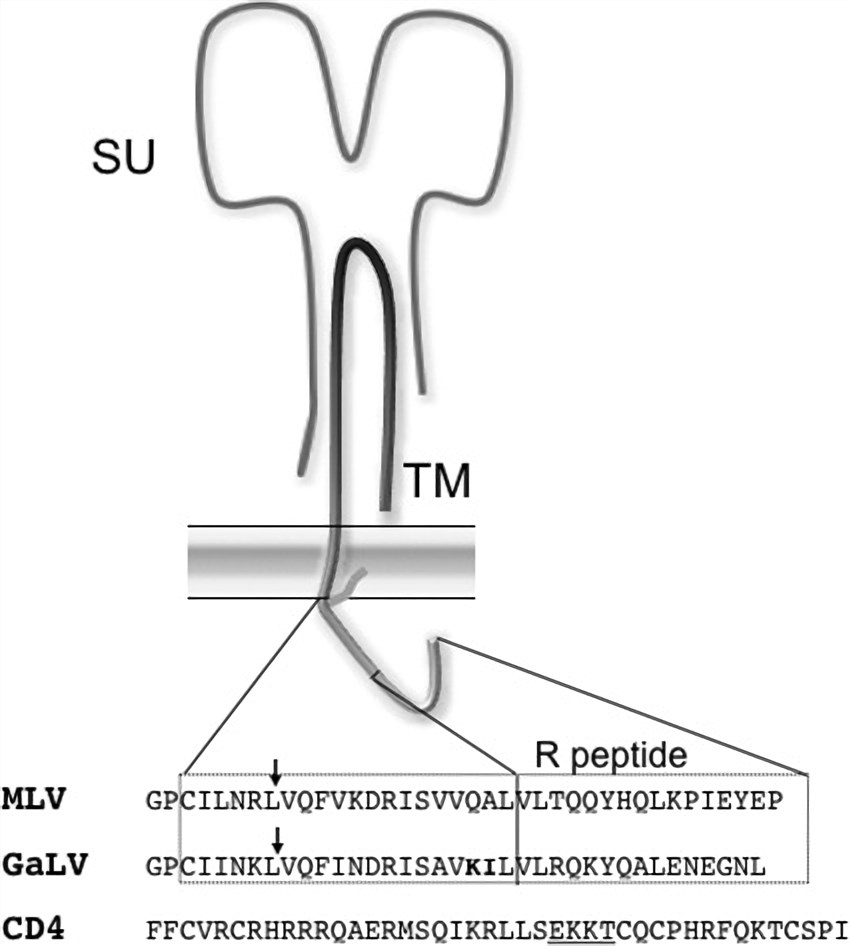Gibbon Ape Leukemia Virus
Pseudotyping lentivirus vectors with different viral glycoprotein is a useful strategy to change the host range of the vectors. Nowadays, the gammaretrovirus has been widely used for gene therapy because of its wide host cell tropism and nonpathogenicity. Lentiviral vectors pseudotyped with the envelope (Env) glycoprotein derived from gibbon ape leukemia virus (GaLV) have been successfully used in recent preclinical gene therapy studies. Creative Biolabs provides comprehensive glycoprotein-pseudotyped lentivirus vectors for basic research and preclinical applications. Here, with the help of our advanced technique and experienced staff, Env derived from GaLV is fully utilized to provide customized lentivirus vectors design and construction services for our global clients.
Background of Gibbon Ape Leukemia Virus
The origin of GaLV has been assumed to be a murine retrovirus derived from a local South East Asian rodent host. The host cell receptor for GaLV Env has been identified as a sodium-dependent phosphate transporter protein. Similar to other retroviruses, GaLV encodes a single transmembrane surface glycoprotein (GaLV Env), which is cleaved into surface (SU) and transmembrane (TM) subunits. The TM domain of GaLV Env contains a short 30-amino-acid C-terminal cytoplasmic tail. The Env protein from GaLV has been shown to be incompatible with HIV-1 in the production of infectious pseudotyped particles. This incompatibility has been mapped to the C-terminal cytoplasmic tail of GaLV Env and the HIV-1 accessory protein Vpu modulates this incompatibility. Glycoproteins containing the cytoplasmic tail from GaLV Env are prevented from being incorporated into HIV-1 particles by Vpu, effectively reducing infectious particle production by 50- to 100-fold.
 Figure 1. Schematic of murine leukemia virus (MLV) and GaLV Env protein. (Lucas, 2010)
Figure 1. Schematic of murine leukemia virus (MLV) and GaLV Env protein. (Lucas, 2010)
Pseudotyping Strategy with GaLV Env
Retrovirus vectors are the most commonly used gene transfer vectors in current human gene therapy applications. The host ranges of such vectors are influenced in large part by the properties of the protein contained in the outer lipid Env of the vector particle. Pseudotyping allows the vectors to transduce ranges of cells and tissues different from those that would be possible with just the native Env. Three strategies have been proposed by Creative Biolabs to allow GaLV Env to pseudotype HIV particles, (i) removal of the C-terminal half of the cytoplasmic domain (R peptide), (ii) replacement of the whole cytoplasmic tail with the corresponding MLV region, and (iii) mutation of two residues K618 and I619 upstream of the R peptide cleavage site. Our perfect strategy and advanced hardware facilities will guarantee you a perfect GaLV-glycoprotein pseudotyped lentivirus vector.

The properties of the GaLV Env enable lentivirus vectors pseudotyped with GaLV Env be potentially useful for human gene therapy applications. If you are interested in our GaLV EnV pseudotyping services, please feel free to contact us for more information.
Reference
- Lucas, T. M.; et al. (2010). Pseudotyping incompatibility between HIV-1 and gibbon ape leukemia virus Env is modulated by Vpu. Journal of virology. 84(6): 2666-2674.
